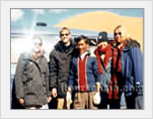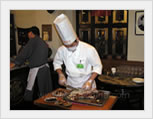
Hubei Provincial Museum Guide
-Travel to Hubei Provincial Museum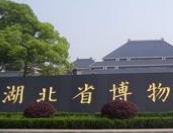 Hubei Provincial Museum, near East Lake, is a National AAAA Level Tourist Attraction and contains more cultural relics than any other museum in Hubei Province. It is located in the Wuchang District of Wuhan, Hubei Province, is the only provincial comprehensive museum in the province. It collects, protects, and exhibits the cultural relics discovered in the province. Since 1953, it has collected over 200,000 cultural relics, including pottery, porcelains, jade, bronze vessels, ancient weapons, and ancient musical instruments. Among these cultural relics, 812 are listed as first-class relics of China, and 16 are considered national treasures.
Hubei Provincial Museum, near East Lake, is a National AAAA Level Tourist Attraction and contains more cultural relics than any other museum in Hubei Province. It is located in the Wuchang District of Wuhan, Hubei Province, is the only provincial comprehensive museum in the province. It collects, protects, and exhibits the cultural relics discovered in the province. Since 1953, it has collected over 200,000 cultural relics, including pottery, porcelains, jade, bronze vessels, ancient weapons, and ancient musical instruments. Among these cultural relics, 812 are listed as first-class relics of China, and 16 are considered national treasures.
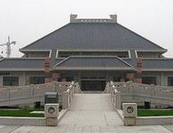 The Chime Bells Exhibition Hall contains two parts: the Exhibition Hall and the Music Hall. In the Exhibition Hall, you can see many cultural relics that have been unearthed from the tomb of Yi (the king of the Zeng Sate in the Warring States Period (476 BC - 221 BC), such as the exquisite bronze vessel known as 'Crane Standing on the Antler', ancient halberds, triangle-shaped swords called Shu, and the bamboo slips that were used for writing on in ancient times. The most famous treasure is the Chime Bells, which is the largest bronze musical instrument ever discovered. With a set of bells of different sizes, it can play various tones of the musical scale, and the timbre is quite beautiful. There are about 3,000 ancient Chinese characters on the bells, describing the music and the owner of this instrument. In the Music Hall, musicians wearing ancient clothes play a replica of the Chime Bells two times a day, at 11:00 and 16:00. You will surely be enchanted by the ancient beautiful music, which has been played overseas on many occasions.
The Chime Bells Exhibition Hall contains two parts: the Exhibition Hall and the Music Hall. In the Exhibition Hall, you can see many cultural relics that have been unearthed from the tomb of Yi (the king of the Zeng Sate in the Warring States Period (476 BC - 221 BC), such as the exquisite bronze vessel known as 'Crane Standing on the Antler', ancient halberds, triangle-shaped swords called Shu, and the bamboo slips that were used for writing on in ancient times. The most famous treasure is the Chime Bells, which is the largest bronze musical instrument ever discovered. With a set of bells of different sizes, it can play various tones of the musical scale, and the timbre is quite beautiful. There are about 3,000 ancient Chinese characters on the bells, describing the music and the owner of this instrument. In the Music Hall, musicians wearing ancient clothes play a replica of the Chime Bells two times a day, at 11:00 and 16:00. You will surely be enchanted by the ancient beautiful music, which has been played overseas on many occasions.
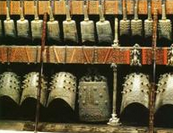 The Chu Culture Exhibition Hall features the regional culture of the Chu State. Most of the cultural relics displayed here are bronze vessels, lacquer works, bamboo and wooden artifacts, and silk knitted products. You can also see various ancient weapons of the Chu State such as the sword of Gou Jian (the king of the Yue State in the Spring and Autumn Period) and the shaft of Fu Chai (the king of the Wu State in the Spring and Autumn Period). In 2002, archaeologists discovered pieces of chariots and horses of the Chu State. After careful restoration, some of the chariots and horses are now displayed in this hall. In addition to the unearthed cultural relics, some restored models of the houses in which Chu people lived are shown to the visitors to give them more direct impression of the ancient Chu people's lives.
The Chu Culture Exhibition Hall features the regional culture of the Chu State. Most of the cultural relics displayed here are bronze vessels, lacquer works, bamboo and wooden artifacts, and silk knitted products. You can also see various ancient weapons of the Chu State such as the sword of Gou Jian (the king of the Yue State in the Spring and Autumn Period) and the shaft of Fu Chai (the king of the Wu State in the Spring and Autumn Period). In 2002, archaeologists discovered pieces of chariots and horses of the Chu State. After careful restoration, some of the chariots and horses are now displayed in this hall. In addition to the unearthed cultural relics, some restored models of the houses in which Chu people lived are shown to the visitors to give them more direct impression of the ancient Chu people's lives.
More Attractions in Wuhan
Your Question & Quick Answer*We welcome and appreciate your questions & reviews
Booking Procedures | Terms & Conditions | Payment Methods | Links | Site Map | About Us | Contact Us | Travel Agent
Copyright 2008, All rights reserved.. itourbeijing.com professional china travel guide and china travel service
TEL: 86-10-85711972 (Universal) 1-888-288-9328 (North America) E-mail: contact@itourbeijng.com
Tours Index | China Tours | Beijing Tours | Xi'an Tours | Shanghai Tours | Guilin Tours | Tibet Tours
China Travel | Beijing Travel | Shanghai Travel | Xi'an Travel | Guilin Travel |Beijing Map
China Golf | Beijing Golf | Shanghai Golf | Xiamen Golf | The Great Wall Travel | Yangtze Cruise | Travel Picture
